Theophylline

Theophylline structure
|
Common Name | Theophylline | ||
|---|---|---|---|---|
| CAS Number | 58-55-9 | Molecular Weight | 180.164 | |
| Density | 1.5±0.1 g/cm3 | Boiling Point | 454.1±37.0 °C at 760 mmHg | |
| Molecular Formula | C7H8N4O2 | Melting Point | 271-273 °C | |
| MSDS | Chinese USA | Flash Point | 228.4±26.5 °C | |
| Symbol |

GHS06 |
Signal Word | Danger | |
Use of TheophyllineTheophylline is a nonselective phosphodiesterase (PDE) inhibitor, adenosine receptor blocker, and histone deacetylase (HDAC) activator. |
| Name | theophylline |
|---|---|
| Synonym | More Synonyms |
| Description | Theophylline is a nonselective phosphodiesterase (PDE) inhibitor, adenosine receptor blocker, and histone deacetylase (HDAC) activator. |
|---|---|
| Related Catalog | |
| Target |
Human Endogenous Metabolite |
| References |
| Density | 1.5±0.1 g/cm3 |
|---|---|
| Boiling Point | 454.1±37.0 °C at 760 mmHg |
| Melting Point | 271-273 °C |
| Molecular Formula | C7H8N4O2 |
| Molecular Weight | 180.164 |
| Flash Point | 228.4±26.5 °C |
| Exact Mass | 180.064728 |
| PSA | 72.68000 |
| LogP | -0.17 |
| Vapour Pressure | 0.0±1.1 mmHg at 25°C |
| Index of Refraction | 1.620 |
| Storage condition | 2-8°C |
| Stability | Stable. Incompatible with strong oxidizing agents. |
| Water Solubility | 8.3 g/L (20 ºC) |
Synonym:1,3-Dimethylxanthine; 3,7-Dihydro-1,3-Dimethyl-1H-Purine-2,6-Dione; 1,3-Dimethyl-2,6-Dioxo-1,2,3,6-Tetrahydropurin Section 2 - COMPOSITION, INFORMATION ON INGREDIENTS
Risk Phrases: 22 Section 3 - HAZARDS IDENTIFICATION EMERGENCY OVERVIEW
Harmful if swallowed.The toxicological properties of this material have not been fully investigated. Potential Health Effects Eye: May cause eye irritation. The toxicological properties of this material have not been fully investigated. Skin: May cause skin irritation. The toxicological properties of this material have not been fully investigated. Ingestion: Harmful if swallowed. May cause irritation of the digestive tract. May cause headache, nausea, fatigue, and dizziness. Inhalation: May cause respiratory tract irritation. The toxicological properties of this substance have not been fully investigated. Chronic: No information found. Section 4 - FIRST AID MEASURES Eyes: Flush eyes with plenty of water for at least 15 minutes, occasionally lifting the upper and lower eyelids. Get medical aid. Skin: Get medical aid. Flush skin with plenty of water for at least 15 minutes while removing contaminated clothing and shoes. Wash clothing before reuse. Ingestion: Never give anything by mouth to an unconscious person. Get medical aid. Do NOT induce vomiting. If conscious and alert, rinse mouth and drink 2-4 cupfuls of milk or water. Inhalation: Remove from exposure and move to fresh air immediately. If not breathing, give artificial respiration. If breathing is difficult, give oxygen. Get medical aid. Notes to Physician: Section 5 - FIRE FIGHTING MEASURES General Information: As in any fire, wear a self-contained breathing apparatus in pressure-demand, MSHA/NIOSH (approved or equivalent), and full protective gear. During a fire, irritating and highly toxic gases may be generated by thermal decomposition or combustion. Extinguishing Media: Use agent most appropriate to extinguish fire. Use water spray, dry chemical, carbon dioxide, or appropriate foam. Section 6 - ACCIDENTAL RELEASE MEASURES General Information: Use proper personal protective equipment as indicated in Section 8. Spills/Leaks: Clean up spills immediately, observing precautions in the Protective Equipment section. Sweep up, then place into a suitable container for disposal. Avoid generating dusty conditions. Provide ventilation. Section 7 - HANDLING and STORAGE Handling: Wash thoroughly after handling. Remove contaminated clothing and wash before reuse. Use with adequate ventilation. Avoid contact with eyes, skin, and clothing. Keep container tightly closed. Avoid ingestion and inhalation. Storage: Keep container closed when not in use. Store in a tightly closed container. Store in a cool, dry, well-ventilated area away from incompatible substances. Section 8 - EXPOSURE CONTROLS, PERSONAL PROTECTION Engineering Controls: Use adequate ventilation to keep airborne concentrations low. Exposure Limits CAS# 58-55-9: Russia: 0.5 mg/m3 TWA Personal Protective Equipment Eyes: Wear appropriate protective eyeglasses or chemical safety goggles as described by OSHA's eye and face protection regulations in 29 CFR 1910.133 or European Standard EN166. Skin: Wear appropriate protective gloves to prevent skin exposure. Clothing: Wear appropriate protective clothing to prevent skin exposure. Respirators: Follow the OSHA respirator regulations found in 29 CFR 1910.134 or European Standard EN 149. Use a NIOSH/MSHA or European Standard EN 149 approved respirator if exposure limits are exceeded or if irritation or other symptoms are experienced. Section 9 - PHYSICAL AND CHEMICAL PROPERTIES Physical State: Powder Color: white Odor: None reported. pH: Not available. Vapor Pressure: Not available. Viscosity: Not available. Boiling Point: Not available. Freezing/Melting Point: 270.00 - 274.00 deg C Autoignition Temperature: Not available. Flash Point: Not available. Explosion Limits, lower: Not available. Explosion Limits, upper: Not available. Decomposition Temperature: Solubility in water: slightly soluble Specific Gravity/Density: Molecular Formula: C7H8N4O2 Molecular Weight: 180.17 Section 10 - STABILITY AND REACTIVITY Chemical Stability: Stable under normal temperatures and pressures. Conditions to Avoid: Incompatible materials, dust generation, excess heat, strong oxidants. Incompatibilities with Other Materials: Oxidizing agents. Hazardous Decomposition Products: Nitrogen oxides, carbon monoxide, irritating and toxic fumes and gases, carbon dioxide, nitrogen. Hazardous Polymerization: Has not been reported. Section 11 - TOXICOLOGICAL INFORMATION RTECS#: CAS# 58-55-9: XH3850000 LD50/LC50: CAS# 58-55-9: Oral, mouse: LD50 = 235 mg/kg; Oral, rabbit: LD50 = 350 mg/kg; Oral, rat: LD50 = 225 mg/kg. Carcinogenicity: Theophylline, Anhydrous - Not listed by ACGIH, IARC, or NTP. Other: See actual entry in RTECS for complete information. Section 12 - ECOLOGICAL INFORMATION Section 13 - DISPOSAL CONSIDERATIONS Dispose of in a manner consistent with federal, state, and local regulations. Section 14 - TRANSPORT INFORMATION IATA Not regulated as a hazardous material. IMO Not regulated as a hazardous material. RID/ADR Not regulated as a hazardous material. Section 15 - REGULATORY INFORMATION European/International Regulations European Labeling in Accordance with EC Directives Hazard Symbols: XN Risk Phrases: R 22 Harmful if swallowed. Safety Phrases: S 22 Do not breathe dust. S 24/25 Avoid contact with skin and eyes. S 28A After contact with skin, wash immediately with plenty of water. S 37 Wear suitable gloves. S 45 In case of accident or if you feel unwell, seek medical advice immediately (show the label where possible). WGK (Water Danger/Protection) CAS# 58-55-9: 2 Canada CAS# 58-55-9 is listed on Canada's DSL List. CAS# 58-55-9 is not listed on Canada's Ingredient Disclosure List. US FEDERAL TSCA CAS# 58-55-9 is listed on the TSCA inventory. SECTION 16 - ADDITIONAL INFORMATION N/A |
CHEMICAL IDENTIFICATION
HEALTH HAZARD DATAACUTE TOXICITY DATA
MUTATION DATA
|
| Symbol |

GHS06 |
|---|---|
| Signal Word | Danger |
| Hazard Statements | H301 |
| Precautionary Statements | P301 + P310 |
| Personal Protective Equipment | dust mask type N95 (US);Eyeshields;Faceshields;Gloves |
| Hazard Codes | Xn:Harmful |
| Risk Phrases | R22 |
| Safety Phrases | S7-S16-S36/37-S45 |
| RIDADR | UN 2811 6.1/PG 3 |
| WGK Germany | 1 |
| RTECS | XH3850000 |
| Packaging Group | III |
| Hazard Class | 6.1(b) |
| HS Code | 2939590000 |
| Precursor 8 | |
|---|---|
| DownStream 10 | |
| HS Code | 2939590000 |
|---|
|
Cytochrome P450-dependent metabolism of caffeine in Drosophila melanogaster.
PLoS ONE 10(2) , e0117328, (2015) Caffeine (1, 3, 7-trimethylxanthine), an alkaloid produced by plants, has antioxidant and insecticide properties that can affect metabolism and cognition. In vertebrates, the metabolites derived from ... |
|
|
Hyperspectral imaging in quality control of inkjet printed personalised dosage forms.
Int. J. Pharm. 483(1-2) , 244-9, (2015) The aim of the study was to investigate applicability of near infra-red (NIR) hyperspectral imaging technique in quality control of printed personalised dosage forms. Inkjet printing technology was ut... |
|
|
Ram seminal plasma proteins contribute to sperm capacitation and modulate sperm-zona pellucida interaction.
Theriogenology 83(4) , 670-8, (2015) Incubation of ram spermatozoa in capacitating conditions with cAMP-elevating agents promotes a progressive time-dependent increase in the capacitated sperm subpopulation. In this study, the fertilizin... |
| Xanthium |
| LABID |
| Elixex |
| Theotard |
| duraphy |
| MFCD00079619 |
| Theolair |
| 1H-Purine-2,6-dione, 3,7-dihydro-1,3-dimethyl- |
| Slo-PhyllinTM |
| Theoclear |
| Teonova |
| Theon |
| [13C]-Theophyllin |
| Egifilin |
| X 115 |
| Cetraphylline |
| Duraphyllin |
| Adisne |
| Theobid |
| Teosona |
| 1,3-Dimethylxanthine |
| Theophylline |
| 1,3-Dimethyl-3,7-dihydro-1H-purine-2,6-dione |
| Etheophyl |
| Euphylong |
| austyn |
| Diffumal |
| Nuelin |
| Talotren |
| Theodel |
| Solosin |
| Elixophyllin |
| Pulmidur |
| Theoplus |
| Afonilum |
| Pulmo-Timelets |
| [14C]-Theophyllin |
| Diphyllin (VAN) |
| LASMA |
| Physpan |
| Unifyl |
| 3,7-dihydro-1,3-dimethyl-1H-purine-2,6-dione |
| Bronchoretard |
| accurb |
| Slo-Phyllin |
| EINECS 200-385-7 |
| Theal |
| Theona P |
| Euphylline |
| Bilordyl |
| unidur |
| 1,3-Dimethylpurine-2,6(1H,3H)-dione |
| Uniphyl |
| Theodrip |
| [3H]-Theophyllin |
| UNIPHYLLIN |
| asmax |
| Aerolate |
 CAS#:107-31-3
CAS#:107-31-3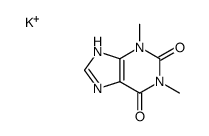 CAS#:57533-87-6
CAS#:57533-87-6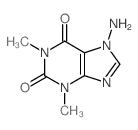 CAS#:81281-58-5
CAS#:81281-58-5 CAS#:58-08-2
CAS#:58-08-2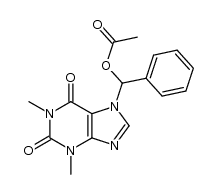 CAS#:226386-40-9
CAS#:226386-40-9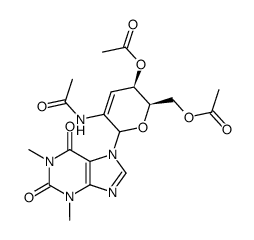 CAS#:80035-38-7
CAS#:80035-38-7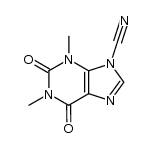 CAS#:124093-03-4
CAS#:124093-03-4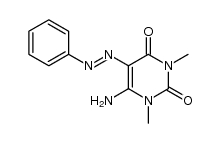 CAS#:122707-25-9
CAS#:122707-25-9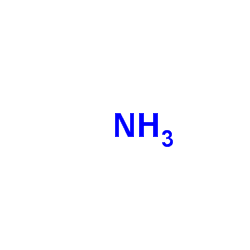 CAS#:7664-41-7
CAS#:7664-41-7 CAS#:57-13-6
CAS#:57-13-6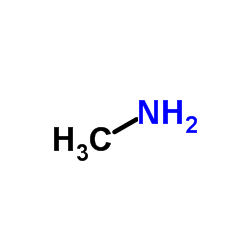 CAS#:74-89-5
CAS#:74-89-5 CAS#:317-34-0
CAS#:317-34-0 CAS#:577-66-2
CAS#:577-66-2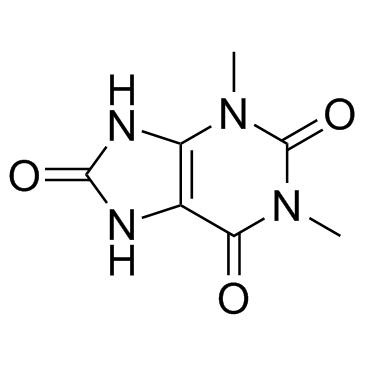 CAS#:944-73-0
CAS#:944-73-0 CAS#:6136-37-4
CAS#:6136-37-4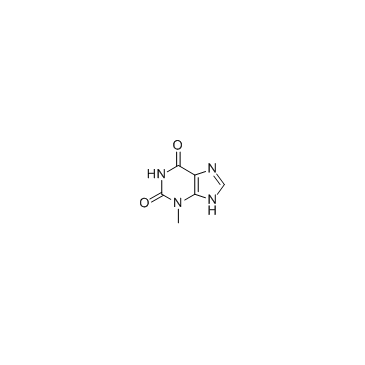 CAS#:1076-22-8
CAS#:1076-22-8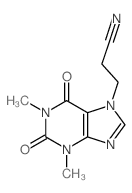 CAS#:1811-38-7
CAS#:1811-38-7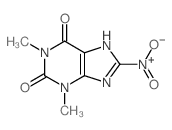 CAS#:2099-73-2
CAS#:2099-73-2
